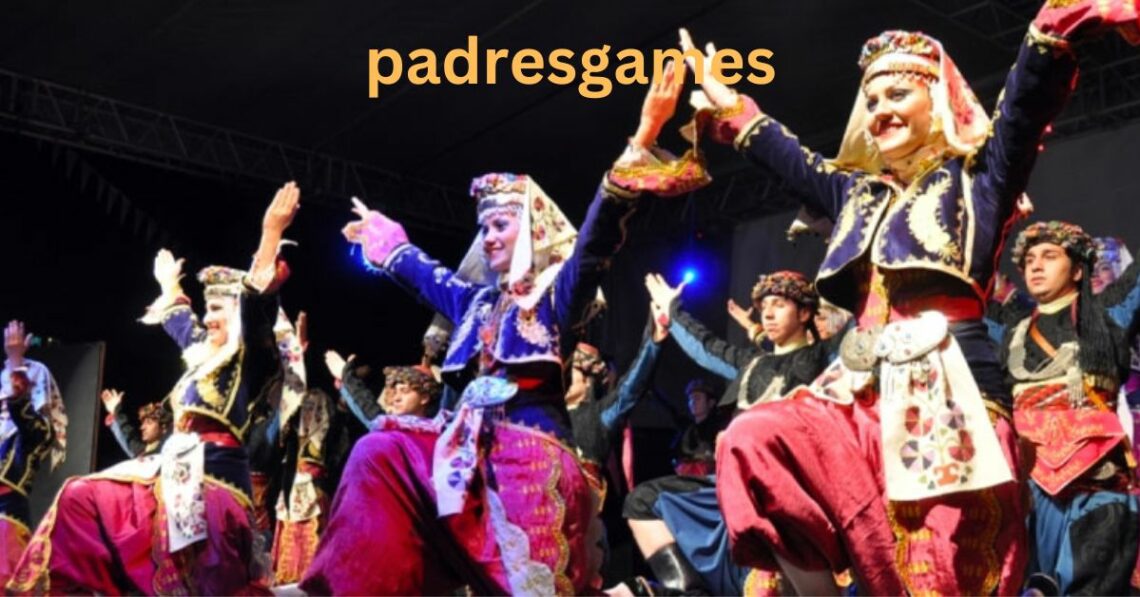
The Vibrant World of Evırı, a Turkish Folk Dance
Turkey is a country rich in cultural heritage, and one of its treasures is the traditional folk dance known as Evırı. This lively and colorful dance has been passed down through generations, enchanting audiences at celebrations, weddings, and festivals. With roots dating back to the 14th century in central Anatolia, Evırı has become an integral part of Turkish culture, preserving a piece of the nation’s history.
Table of Contents
Historical Roots:
Evırı dances have a deep historical significance, reflecting the cultural tapestry of Turkey. Originating in central Anatolia, this traditional dance has evolved over the centuries, maintaining its essence while incorporating regional variations. The dance’s roots can be traced back to the 14th century, making it a living testament to Turkey’s enduring cultural traditions.
The Dance of Unity:
At the heart of Evırı is the spirit of unity and togetherness. The dance is typically performed in a circle, symbolizing the connectedness of individuals within a community. Men and women join hands, forming a harmonious circle that moves in rhythm to the music. The dance is often led by a central figure known as the ‘hora’ dancer, who guides the participants through the intricate steps.
JONATHAN SCOTT TRAGEDY: UNVEILING THE HEARTBREAKING TALE
Rhythmic Footwork and Energetic Movements:
The dance itself is a feast for the eyes and ears. The basic steps of Evırı involve springing hops, skips, and kicks, creating a lively and dynamic atmosphere. As the music tempo increases, so does the energy of the dance, captivating both participants and onlookers. The rhythmic footwork and synchronized movements contribute to the infectious joy that defines Evırı.
Colorful Costumes and Festive Atmosphere:
No celebration is complete without the vibrant and ornate costumes that accompany the Evırı dance. Dancers don traditional attire, often adorned with bright colors, intricate patterns, and reflective embellishments. The costumes not only add visual appeal but also serve as a nod to the rich cultural diversity of Turkey.
MASALWSEEN – A VERSATILE FLOUR IN NORTH AFRICAN AND MIDDLE EASTERN CUISINES
Preserving Cultural Identity:
Evırı plays a crucial role in preserving Turkey’s cultural identity. Through the dance’s continued practice and performance, younger generations connect with their roots, gaining an appreciation for the traditions that have shaped their heritage. The dance serves as a living link between the past and the present, fostering a sense of pride and belonging.
Beyond Borders:
While deeply rooted in Turkish culture, Evırı has transcended geographical boundaries. Thanks to its infectious energy and captivating charm, the dance has gained popularity beyond Turkey’s borders. International audiences have embraced Evırı, showcasing its universal appeal and its ability to bring people together in celebration.
Evırı: A Dance Through Time
Evırı’s historical roots trace back to the 14th century, where it began its journey in central Anatolia. The dance has since evolved, adapting to the cultural nuances of different regions while maintaining its core essence. Exploring the historical context of Evırı provides a fascinating glimpse into the socio-cultural landscape of Turkey, highlighting the endurance of traditions over the centuries.
THE SIGNIFICANCE OF ÕYGEN (OXYGEN) IN SUSTAINING LIFE ON EARTH
Unity in Motion: The Symbolism of the Circle
Central to the Evırı dance is the symbolic circle formed by participants. This circular formation represents unity and interconnectedness within a community. The dancers, holding hands and moving together, create a powerful visual metaphor for the bonds that tie individuals together. Delving into the symbolism of the circle enhances our understanding of the cultural significance embedded in the dance and its role in fostering a sense of community.
Rhythmic Choreography: The Artistry of Evırı’s Steps
The heart of Evırı lies in its rhythmic footwork and energetic movements. The dance features a repertoire of steps, including springing hops, skips, and kicks, each contributing to the overall dynamism of the performance. Exploring the intricacies of Evırı’s choreography sheds light on the skill and artistry required to execute the dance with precision. Understanding the specific steps and their variations enhances appreciation for the dance’s vibrant and lively nature.
NAVIGATING THE COMPLEX LANDSCAPE OF COMPLIANCE: A COMPREHENSIVE OVERVIEW
Evırı Costumes: A Symphony of Colors and Patterns
An integral part of the Evırı experience is the traditional costumes worn by the dancers. These costumes are a visual feast, adorned with bright colors, intricate patterns, and reflective embellishments. Each element of the attire carries cultural significance, reflecting the diversity of Turkish heritage. Examining the details of Evırı costumes provides insight into the craftsmanship and symbolism behind the attire, enriching our appreciation for the visual spectacle that accompanies the dance.
Cultural Resilience: Evırı as a Pillar of Turkish Identity
Evırı’s enduring presence in Turkish culture serves as a testament to the resilience of cultural traditions. Despite the passage of centuries and changing societal dynamics, the dance has maintained its significance, becoming a cherished aspect of Turkish identity. Exploring how Evırı has weathered the sands of time sheds light on the adaptive nature of cultural practices and their role in shaping and preserving national identity.
Evırı Beyond Borders: Global Appreciation and Influence
While deeply rooted in Turkish tradition, Evırı has transcended national boundaries, captivating audiences around the world. The universal appeal of the dance speaks to its ability to connect people across cultures. Investigating the global appreciation and influence of Evırı provides insight into how cultural expressions can serve as bridges, fostering cross-cultural understanding and appreciation. The dance’s international popularity highlights the power of art to transcend linguistic and geographical barriers, bringing joy and celebration to diverse audiences.
UNVEILING THE ENIGMA: EXPLORING THE CITY OF WITCHES NOVEL
Conclusion:
Evırı is more than just a dance; it is a celebration of history, culture, and community. With its roots reaching back centuries, this Turkish folk dance continues to enchant and unite people, providing a rhythmic expression of the nation’s rich cultural tapestry. As Evırı dances into the future, it carries with it the spirit of tradition, ensuring that the vibrant heritage of Turkey remains alive and well.

Unveiling the Enigma of "Käätjä"
You May Also Like

The Haunting Depths of Poe’s “The Fall of the House of Usher”
October 13, 2023
An Exciting Line-Up: Best College Football Games Today on TV
October 3, 2023
